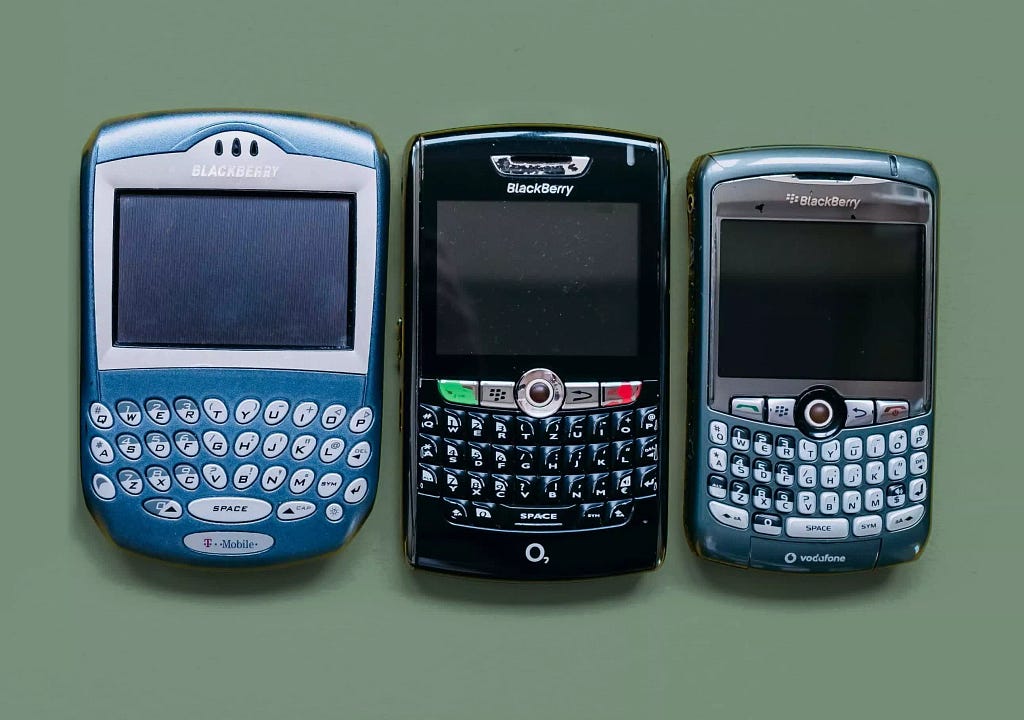Designers are busy people, by design. Let’s learn how to focus on what matters every day.
The paradox of standardization.

To design requires a varied and complex skillset.
You must process lots of information to understand the needs and desires of the end user and then creatively and confidently implement a solution, all while respecting the needs of other stakeholders and their resources (time, money, etc.). Of course, design isn’t just relegated to the discipline of designing things, but also applies to designing interactions between humans and machines, sustainable workflows of information and material, and even job tasks themselves. Design has far reaching consequences in a panoply of industries. Regardless of industry or application, one of the most important attributes of a good design is its sustainability. If a design solution is not sustainable, nothing else matters.
One of the best ways to ensure that designed solutions are maintained is through using standards. When I say standards, what I mean is a known procedure, product or service-level agreement that signifies or attains an accepted level of quality. However, standardization sometimes comes with a negative connotation. To think of something as standardized means to think of something as lacking originality, personality, or creativity. However, this intuition is misguided.
This is the Paradox of Standardization. Particularly in complex environments and systems, standards have a normalizing effect that allow for greater variety, versatility and novelty than if they did not exist.
Before I dive deep into this paradox, I want to clarify and define two different categories of standards. As I mentioned above, standards can be methods for doing an activity as well as an attribute of a product.
The two types of standards are:
Attribute Standards:
These apply to designed products and services. A product’s dimensions, the voltage of a power outlet, the location of the gas pedal relative to the brake pedal are all different types of standards that we rely on every day without even thinking about it. The attributes of a product have become standardized. Single, double, full, queen, and king-size beds all come with standardized product dimensions to make shopping for beds and matching sheets easy. The standardized location of the brake and gas pedal makes operating a vehicle much safer. And many of us know firsthand what happens when we try to use our standardized appliances overseas without an electrical adapter.

Even service-based organizations offer several standards based on their service. Often, these standards are touted as guarantees. Hospitals may guarantee a maximum wait time in their emergency rooms, and Amazon will guarantee 2-day shipping for their prime members.
Working standards:
Unlike attribute standards which are meant to be communicated to the end user or consumer, working standards are meant to be used for the person doing a particular behavior. Sometimes these are referred to as work instructions, standard operating procedures, or best practices. These communicate the best-known method for doing some behavior. These don’t just exist in business environments either. If you’ve ever bought a product which warns “some assembly required” or constructed a Lego set, you’ve undoubtedly reached for a set of working standards that came along with the product. The value of these working standards is that they describe and explain how a particular activity ought to be completed — you don’t need to figure it out for yourself, they transfer expertise and knowledge. Within organizations, these standards are often enacted to ensure product quality, safety, and productivity in operations intensive workplaces.
Within the category of working standards, there are several popular ways to document and communicate what the standards are.
Written: Documents that describe how a particular job or activity is to be completed, through text. Written standards usually break larger jobs into smaller specific activities called work elements. Good written standards will also include information about the activity including what initiates (starts) the activity, when the activity concludes, the sequence of work elements, the key outputs of the activity, and the materials, machinery and tools that are needed to complete the task.

Visual Standards: A picture is worth a thousand words. Visual standards do a much better job than written standards because they allow the individual to see, step by step, how something is done and what the finished product should like. The benefits of visual standards are well-known and come in a variety of forms, from 5S to Lean Visual Management to Marie Kondo’s KonMari method of organization. Visual standards are so effective that even very small children can assemble.

Video Standards: Just like visual standards, video standards provide an even greater resource to individuals completing some sort of work task. Video standards have added benefit of showing real-time activities the individual should be engaged in. visual standards contain additional information as well like the surrounding environment, tool usage, and other nuanced information that may be important, but wouldn’t make the cut in visual or written instructions. If you’ve ever searched “How To…” in YouTube, you’ve searched for some video standard.
Video standards are also very convenient for improving and updating standards. If a new technique is developed that promises to decrease the time it takes to do a specific activity, comparing the two video standards side by side is a powerful and convincing way to demonstrate proof of concept.
It’s important to note, that written, visual, and video work instructions are not mutually exclusive. Written instructions can be combined with pictures and videos to augment the level of clarity and support that the work instructions provide. As a rule of thumb, always try to provide the most visuals possible, but when even when not feasible, one or two well thought out diagrams and effective labels can go a long way for effective work instructions.

Expectations — Good and Bad
The reason we standardize is because we expect some positive benefit from it. Nobody is going to spend the time to write publish and distribute work instructions if these instructions don’t gain us some advantage. These positive expected impacts are the usual suspects: increased productivity, reliability, consistency, and quality.
But when we standardize products and methods there are also negative expectations. The theme has been explored excessively, extensively, ad nauseam, by a number of writers across industries. In the west we live in such an individualized society that anything that even suggests conformity is thought of as an attack against our freedom to make decisions for ourselves, our creativity, our intellect.
One of the more salient ways this has presented itself in the past few decades is from the loss of color from our world. A great article in UX Collective showcases how the world has become less colorful and more bland. From the colors of our automobiles to the colors of our fast food restaurants have all converged into shades of white, black and brown. Not only are we converging on a common standard, but that common standard is bleak!

These two competing notions suggest that standardization is a great battlefield where the priorities of efficiency, reliability, and productivity square off against the free, novel, and creative.
However, when you consider the role that standards play at a macro, society level, their effect is quite the opposite of what’s expected. The practice of standardization is not a monolithic force of convergence. Instead, the use of standards in work and design facilitate higher levels of creativity, versatility, and even more options to select from. This is the paradox of standardization. By integrating standards into product design and work processes you facilitate a more adaptable and versatile world.
Working standards
In production-intensive operations, working standards reign supreme. Sometimes called best practices, they prescribe the best-known way a particular work task ought to be done. These are not just arbitrary rules set down by the organization’s executives but symbolize a deep history of learning and improving. At world-class companies like Toyota, employees are encouraged to come up with ways to customize the way they do work, usually to make it easier for the employees, an activity termed “Kaizen”. These ideas are trialed, tested, and validated. If the results are good, the new customization becomes the new best practice. In this way, standards work not simply to create a bespoke, customized work environment for individual employees, but create an engine of innovation where all the best ideas and benefits are shared by all the employees.
Designing and integrating working standards into work isn’t just confined to the world of manufacturing and production. In fact, creative white-collar work like designers, engineers, programmers and project managers can also benefit from their integration. The reason behind this is an interesting piece of psychology trivia.

People perform activities in 3 basic ways, and they problem solve in two basic ways. That’s the premise of Psychologist James Reason and Electrical Engineer Jens Rasmussen’s Skills-Rules-Knowledge theory. At a high level, the theory states that people have three separate cognitive levels of thinking. The first level, the skills level is automatic, efficient and requires very little focus. This is akin to muscle memory or what Daniel Kahneman, in his seminal book “Thinking fast and slow” called System 1 thinking. Next is the rules-based level. When a person operating on the skills-based level notices that they’ve completed their task incorrectly or can’t complete it, they activate a higher level of thinking, the rules-based level. This is an active problem-solving level. At this level, the person tries to determine what the problem is and how to remedy the problem. Because humans strive to be efficient, we rely on a number of rules, pre-packaged routines that tell us what to do, to remedy the problem. In the case that this effort also yields unsatisfactory results, the individual will move higher up into the knowledge level. At this level, the person relies on intuition, guess and check, and other knowledge to try to solve the problem.

The SRK framework can tell us a lot about critical thinking, problem solving, and the role of standardization. First, we are most efficient when we are at the lowest, skills-based level of thinking. As we move up to higher levels of cognition, it demands more energy, takes more time, and is prone to more mistakes and errors. The knowledge-based level is nothing more than a hit-or-miss way of solving problems. The results can be disastrous. Second, the stability of the system and environment is vitally important. Stability in the surrounding environment means that the automatic and routine, skills-based level will be sufficient for most work. Because there is stability, even when the skills-based level is not sufficient, the relative novelty of the challenge will be small, and can addressed by the rules-based level. And finally, the more prepackaged rules [read: standards] that we have in our quiver of problem-solving, the more effective we’ll be at solving problems, and working through challenges!
Customization
One of the most surprising ways standardizations facilitates product variety and novelty is through customization. At first glance, standardization and customization appear diametrically opposed. Standardization implies uniformity, a one-size-fits-all approach aimed at streamlining production and minimizing variability. Conversely, customization suggests products that are tailored to the needs and preferences of individuals. However, the paradox of standardization challenges this dichotomy by revealing how stringent standards can facilitate greater customization.
One of the best examples of this is Dell computers. Unlike lots of other manufacturing companies, Dell uses a build-to-order model of manufacturing. Every computer that Dell builds, has already been bought be a customer! The build-to-order model emphasizes customization and allows customers to tailor their computers to their specific needs. It also has numerous benefits for Dell, like minimizing inventory and production costs.
The key to this custom, build to order model is standardization. Only though the standardization of assembly procedures, the compatibility of components, and software could Dell ever hope to create such a unique product for their customers.

Modular Design
Dell’s build-to-order model is a more specific example of an important design principal that is becoming more and more popular. The principal is called Modular Design.
Simply put, modular design is the design of many separate, self-contained products that can be attached together, or more commonly, added on to a core product. This technique allows for vast amounts of customization that are able to be tailored to each customer’s needs. The Build-to-order model of Dell essentially treats each part of the computer (the sound card, RAM, motherboard, graphics card) as separate modules, each with their own catalog of options to choose from. When a customer builds their computer, they’re essentially choosing standardized options for each module that can be assembled together for a custom product. Next time you walk into a Chipotle, you’ll notice that this has taken root in the food service industry as well, but more on that later.
One of the places where modular design is having the largest impact is in software and tech, particularly as Software as a service (SaaS) has become the dominant module for such companies. Whether it’s Salesforce, Workday, ServiceNow, or some other service provider, the modular design model is found in all. Customers of these software can buy a core package of products, and then “add-on” different modules based on their individual needs. The software is standardized, the modules are standardized, and the integrations are standardized. This allows for a level of versatility and bespoke service that otherwise couldn’t be imagined, all while minimizing the need excessive and expensive work by developers doing custom integrations and one-off reports and exceptions.
Distributed Innovation & Open Source
Modular design also elicits an interesting and important dynamic that are created by standards: convergence. Modular design, whether it’s SaaS companies or manufacturers rely on creating add-ons and modules that converge onto a core product. Standards are responsible for this convergence and it’s the reason why standardization is always accompanied by increased predictability, reliability, and stability.
While remaining in the tech industry, we can see the dynamics of standards and convergence being exploited in a profound way: namely open-source development. Open-source programming languages are becoming increasingly popular, particularly in the world of data analytics and data science. Languages like Python and R allow developers to create new packages and libraries to help all users of the language access and use the innovations without having to develop the libraries themselves. This allows for greater innovation and many solutions to niche applications and challenges.
Two of the most prolific open-source developers are Hadley Wickham and Wes McKinney. Wickham invented an array of packages he calls the “Tidyverse” for R. The Tidyverse makes R more amenable to statistical analysis and easier to use for many users. Likewise, McKinney invented a similar software library for Python known as Pandas. These and other innovations are only possible through the convergence effect of standardization. Standardized syntax and sharing procedures make it possible for third party developers to participate in a project of distributed innovation.


This isn’t just true of open-source applications either. The iPhone also presents a though provoking case study of the convergence power of standards. Consider, that before the iPhone, people could still do many of the things that we still use our phones for now: Send texts, take pictures and videos, check email, and even access the internet. Why was the iPhone (and for the matter the smartphone model) so revolutionary? The App Store.

Apple’s main innovation was to create an app store, a centralized, convergent marketplace where users could search for and download apps. Moreover, Apple did not take it upon themselves to develop applications, opting instead to distribute that role to third party developers. Apple developed a standard Integrated Development Environment (IDE) called Xcode, creating a unifying standard for all prospective developers. These developers could design apps for the iOS system and then upload them to the App Store marketplace. Apple standardized the development of smartphone technology in a way that created stability for a wider marketplace. Comforted by this stability, many third party developers spent their time and effort to develop value-added applications for the iOS environment that they would’ve never developed in its absence. The common-code-app-marketplace model still remains the industry standard for all smartphone developers.

Novelty through market convergence
Burger King’s iconic 1970s “Have It Your Way” campaign epitomizes the paradox of standards in action.
“Hold the pickles, hold the lettuce. Special orders, don’t upset us. All we ask is that you let us serve it your way. Have it your way.”

By offering a standardized menu with the option to customize orders, Burger King harnesses the power of standards to enhance customer choice and satisfaction. The foundation of this paradox lies in the clarity and predictability provided by standardized processes. Customers can rely on consistent quality and service, knowing that their preferences will be accommodated within the established framework. In essence, the very standards that govern Burger King’s operations enable a high degree of customization, illustrating the symbiotic relationship between uniformity and flexibility.
Today in the food service industry, that same trend has evolved. More choice and a la carte options have become the order of the day. Quick service restaurants and franchises like Which Which and Chipotle accommodate custom orders by establishing standards and limits to what items can go on a sandwich or into a burrito, and then using a build to order assembly station to complete the order.

The benefits of novelty afforded by standards are not just limited to food service of course. Consider a few examples:
The Universal Serial Bus (USB) is a relatively recent invention that has created a revolution in hardware design and integration. The USB allows manufacturers to build products without having to worry about how the machines will interface with one another Printers, phones, ring lights, computer mice, and keyboards all seamlessly connect to computers through USBs.

The shipping container has revolutionized the world economy and has facilitated greater ease of shipping and globalization, a theme explored extensively in Mar Levinson’s “The Box”. This has created a diverse array of new suppliers and consumers, from many different countries. Just 50 years ago, this didn’t even seem possible. A myriad of diverse products can be shipped around the world reliably because of standardized containers.

The paradox of standards challenges conventional wisdom by revealing how standardization can paradoxically enable greater customization. Through examples such as Burger King’s “Have It Your Way” campaign, Dell’s manufacturing model, and modular design principles, we have explored the dynamic interplay between uniformity and flexibility.
Standards create a landscape of consistency that allows for more versatility and ingenuity. By embracing this paradox, organizations can unlock new possibilities for innovation and customer empowerment. In a world shaped by standards, navigating this delicate balance is essential for success in an ever-changing landscape.
Can consistency and creativity coexist? was originally published in UX Collective on Medium, where people are continuing the conversation by highlighting and responding to this story.


Leave a Reply